Fighting the Format: Temur Energy

Welcome back to Fighting the Format, the series in which I lay down the strategies of the best decks in the format moving into a given weekend – what they are, how they work, how they win, and – importantly – how to beat them.
The Standard format has moved quickly since the Pro Tour. First, we had the powerful Red decks storm back into the metagame after a long hiatus, and annihilate the decks that spent too much time durdling. Then, Zombies and BG Constrictor re-rose to prominence, crushing the Red menace and proving once again that a deck putting a bunch of copies in a Pro Tour top 8 doesn’t make it unbeatable. Brad Nelson and Corey Baumeister enjoyed a GP top 8 with a BG list tuned to beat Red, but decided one top 8 wasn’t enough. Why not two?
The Deck
Temur Energy – Brad Nelson, 1st Place at Grand Prix Denver August 19th-20th 2017
Creatures (24)
4 Bristling Hydra
3 Glorybringer
4 Longtusk Cub
4 Rogue Refiner
4 Servant of the Conduit
4 Whirler Virtuoso
1 Rhonas the Indomitable
Lands (22)
4 Forest
1 Island
2 Mountain
4 Aether Hub
4 Botanical Sanctum
1 Game Trail
1 Lumbering Falls
3 Sheltered Thicket
2 Spirebluff Canal
Spells (14)
2 Abrade
4 Harnessed Lightning
2 Magma Spray
2 Skysovereign, Consul Flagship
4 Attune with Aether
Sideboard
2 Tireless Tracker
1 Abrade
4 Negate
2 Chandra, Flamecaller
2 Chandra, Torch of Defiance
2 Confiscation Coup
2 Radiant Flames
For the first time in Magic history, these two brothers both reached the top 8 in two GPs in a row, and this time they also brought our current World Champion Brian Braun-Duin along for the ride. The three of them sported the same 75 as above to a 1st, 2nd and 3rd place finish. So how did this deck get them there?
How Does it Work?
To start things off, let’s look at the card that typifies both the ‘Temur’ and ‘Energy’ in the title:
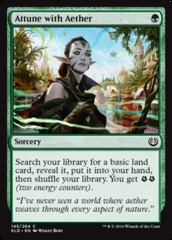
Attune has to be one of the most unassuming standard staples printed in the last few years. For a single green mana, you get to fetch a colour and get your energy stores started. Given how many uses there are for energy in the deck, it basically acts as a tap-land for any colour that draws you some proportion of a card. Seems like a pretty good deal!
Servant of the Conduit and Rogue Refiner act similarly. By providing a small energy bump on hitting the battlefield, you’re unlikely to ever run low, and each creature comes with a lot of upside. Servant fixes your mana, lets you start deploying some of your big threats ahead of curve, and enables double-spelling early in the game. Refiner replaces itself immediately, while presenting a reasonable 3/2 body (and avoiding the dirty glares from Elvish Visionary. Surely Refiner should be an Elf, right)?

In a deck hungry for energy, Cub pulls double duty. It’s both an excellent energy generator, and a massive energy sink. The problem with two drops in both limited and constructed formats is that while they can be powerful early, their utility drops off in the late game. Cub gets to play both side of the court. On turn two, it’s a two mana 3/3. On turn ten, it’s a two mana 8/8! Backed up by a bit of energy and some removal, a turn two Cub can run away with the game quickly if unanswered.
On the topic of energy sinks, we have Whirler Virtuoso. At its worst, it pulls off a decent Pia Nalaar impression, with slightly better stats. When your fail case is a three mana 3/4 split across two bodies, some of which has evasion, you know you’re in for something good. How about casting Virtuoso with some energy already in the tank? Three mana for a 2/3 and four or more Thopters is borderline unfair! Virtuoso gives Temur Energy another angle of attack – it can go big on the ground, it can throw haymakers in the air, and it can go wide with tokens. Music to my ears!
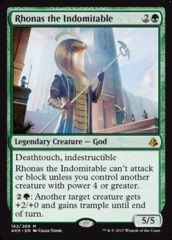
Rhonas may not have fared well in the Magic storyline, but he stills demands respect on the Standard battlefield. As a singleton, Rhonas won’t show up a lot, but he begins the curve of hugely undercosted threats that each must be answered. With Longtusk Cub, Bristling Hydra, Glorybringer and Skysovereign, Consul Flagship, animating Rhonas is not difficult; and as a bonus, just having him in play threatens the opponent with a lot of damage from each other attacker.
Bristling Hydra is the midgame that makes this deck tick. While it doesn’t grow itself as quickly as Longtusk Cub, it trades size efficiency for resilience – while it only gains Hexproof briefly, the threat of activation stops opponents’ from even trying to target it. If the opponent does, the Hydra only gets scarier! Add to that that it turns on Rhonas immediately, and even gives you energy to spend elsewhere if needed, and Hydra is a clear auto-include.
Now, onto the big baddies of the deck:
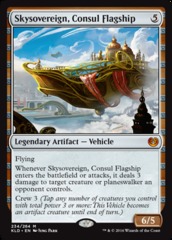

Both Glory and the boat rain fire from the skies with a form of resiliency – Glory gets to attack immediately, only being interrupted by open mana and instant-speed removal, while the Flagship doesn’t even need to animate to take a creature out. The tempo advantage gained by killing an opponent’s creature for free while also adding a huge threat to the board is not to be sniffed at, and the curve of Rhonas/Hydra/Glory or Flagship is nigh unbeatable. Glorybringer and Skysovereign ensure that it’s not just the ground you lock up, but also the air.
The removal suite starts with Harnessed Lightning. As Temur Energy packs so much of the titular resource, Lightning begins at only three damage but practically acts as a two mana Murder. Magma Spray nabs the little recursive creatures like Dread Wanderer and Scrapheap Scrounger, while Abrade pulls it’s weight killing any X/3 that dares show it’s face or potentially game winning artifacts such as Heart of Kiran, Torrential Gearhulk or God-Pharoah’s Gift.
The mana base is smooth, thanks in large part to Kaladesh’s own power plant:
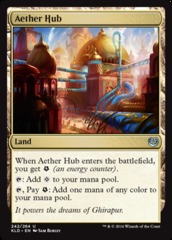
In an energy-based deck, Aether Hub is an untapped five colour rainbow land – more powerful than any fixing Standard has seen for some time. Between Attune and Hub, it’s very rare that Temur will have trouble with one of its colours! As Temur is in an enemy wedge, it also gets access to both the Kaladesh fast lands, and a few cycle lands to minimise flood. Lastly, Brad opted for a single copy of Lumbering Falls – as it is immune to both targeted removal and sorcery speed removal, Falls is an excellent silver bullet versus the various control decks running around, and a great blocker when the situation presents.

The sideboard packs a number of great sticky threats, such as the four Chandra – in her Flamecaller, and Torch of Defiance incarnations – and a pair of Tireless Tracker. The planeswalkers help the deck go bigger post board, and provide respectively extra wraths against aggro decks and removal against midrange. The walkers and Trackers all also provide card draw while presenting a sizable threat, and all six are must-answer problems for the opponent.
The extra red removal in Abrade and Radiant Flames help against small creature decks such as Ramunap Red or Zombies, where the Confiscation Coup can be huge in midrange matchups like BG or the mirror. There’s nothing quite like stealing your opponents’ Skysovereign!
Finally, returning all the way from 94’, we have an oldie but a goodie:
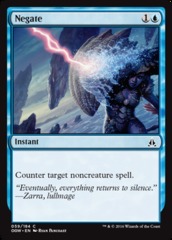
One of the biggest advantages to playing blue is the access to great sideboard options; Negate stands tall among these as a total matchup changer. Whenever the opponent is trying to go bigger, whether in a control, ramp, or combo shell, Negate steps in and messes up their plans. An easy four of.
What is it’s Plan?
Temur is Midrange with a capital ‘M’. It can have fast aggressive starts with Longtusk Cub, it can play a slow defensive game with Refiner, Virtuoso and removal, or it can grind with the best of them utilising the various two for ones available in Refiner, Glory, Tracker etc.
As is often the case with midrange decks, Temur has it’s own proactive plan – curve out with creatures and kill your opponent – but excels at adapting to whichever plan counteracts the opponents. Against aggro, Temur adopts a defensive role, against control, it adopts an aggressive role etc.
Because of this versatility, narrowing down Temur’s plan is difficult, as it can switch gears at the drop of a hat. Still, for all its strengths, it has its weaknesses.
What Are its Strengths and Weaknesses?
Temur has a lot of strengths:
Power
Temur has extremely powerful and synergistic cards all the way up the curve. Cub, Refiner, Hydra and Glory all provide a lot of punch for their cost.
Versatility
As mentioned, Temur can attack from a lot of angles – it can go big, wide, attack on the ground and the air, or lean on card advantage engines like Chandra and Tracker.
Sideboard
Temur can effectively transform from a solid midrange deck into a small control deck, a big midrange deck, or an aggressive tempo deck. There are no matchups that are not winnable playing Temur.

Temur does have its share of weaknesses, however:
Wraths
It’s funny that all three of my deck to beat articles have mentioned this, but this is standard – creature decks are king! Hydra, Cub, Glory etc are all cards that play to the board and don’t affect much else. This means that Fumigate, Hour of Devastation and Hour of Revelation can all clear numerous threats in one go. Be careful not to fire your wrath too early and lose to a resolved Hydra!
Slow
While Temur does play a lot of powerful cards, they can be pretty clunky – its removal mostly costs two mana, and most of its threats are three or more. This means that decks have the option to either go under it – deploying threats faster than Temur can keep up – or over it, exploiting the fact Temur doesn’t apply pressure quickly or efficiently.
Fair
As is often the case with midrange decks, Temur has game against any aggro, control or other midrange deck – where it really suffers is against unfair decks like combo or ramp. As it can’t apply pressure quickly, decks that go way over the top have time to setup, and Temur can struggle to beat a more powerful late game.
So, if you want to beat Temur, you want to look at the below:
Play
Aggro
Decks like Ramunap Red go under what Temur is doing, getting damage in faster than they can defend. Be wary of their sideboard, however – Temur can adapt well, so bring your own board to combat theirs. Planeswalkers are better against Radiant Flames than X/1s!
Control
Long game control decks packing wraths and card draw have a good time against Temur. While it is capable of faster draws, generally it’s too clunky and its threats too costly to deploy quickly. Black and blue based control decks can take advantage of this, netting card advantage with wraths and card draw until Torrential Gearhulk or Planeswalkers can win the long game. If you’re not packing hard wraths like Fumigate, be careful of Bristling Hydra – spot removal is not going to do it. Also, be wary of the board counter magic; a well-timed Negate or two can be game over!
Ramp
Similarly to control, ramp decks go much, much bigger than what Temur is trying to do. With a bit of help from wraths to slow the game down, the ramp decks will typically have the time they need to accelerate their mana and start deploying their giant spells.
Combo
Unfair decks fight on a different axis to Temur – a quick God-Pharoah’s gift provides much more board presence and card advantage than Temur can usually handle, or a turn five New Perspectives kill. As with control, Temur will gain excellent sideboard cards for these matchups, so board accordingly.
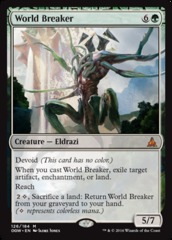
And conversely, I would not advise the following:
Do Not Play
Aggressive Midrange
Decks like BG have a similar game plan to Temur, but play a cheaper curve and less haymakers. In midrange mirrors, splashy five drops are often what decide the game; don’t bring a knife to a sword fight!
One for One Removal
While some spot removal is necessary – you don’t want to let an early Cub kill you by itself, and an unanswered Glorybringer can run rampant – many of Temur’s threats are resilient to it. Refiner replaces itself, Virtuoso leaves behind a bunch of contraptions, and Hydra straight-up ignores it. A good mix of spot removal, wraths and other interaction are preferable.
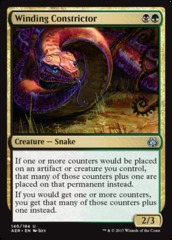
Summary
And that’s Temur Energy. As the swiss-army knife of standard, I’m sure you can see how on the right weekend and in the right hands it can be a very deadly weapon! If you want to play it, go ahead – if it’s good enough for Brad Nelson, it’s good enough for me – but I hope you now have a solid enough understanding of the deck that you can try and take it down.
If you have any questions or comments, please leave them below. As always, good luck!





